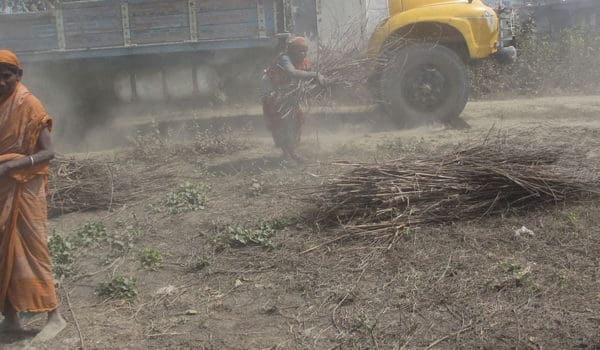Globally 7 million people died attributable to the joint effects of indoor and outdoor air pollution in 2012, according to WHO. NILU’s air quality management programmes in urban areas around the world seek solutions aimed at reducing the health burden of people.

The World Health Organization (WHO) recently published new results concerning excess deaths related to air pollution in the world. Globally, 7 million deaths were attributable to the joint effects of indoor and outdoor air pollution in 2012. Air quality and health assessment is also part of the air quality management programmes performed by NILU in urban areas around the world.
Challenges and solutions
The startling figures presented by WHO based on global health and air quality data has shown that there is a need for more focus on health related air quality management and mitigation evaluations in the future.
NILU has contributed to this kind of research in many of the most affected urban areas in the world. One conclusion from this work has been that there is a large need for institutional building and training of local experts in order to raise awareness and to identify local solutions.
Thus, the solution to the global problems presented by WHO starts on a local level, with focus on work in the largest and most polluted cities. NILU can contribute the knowledge needed to address these issues – assuming that funds are made available from companies like NORAD and The World Bank.
NILUs role in the air pollution problem world wide
NILU has contributed to air quality management and institutional building in many of the most affected mega cities around the world. The goal of NILU’s work has been to identify the air pollution problem, assess possible health impacts and seek solutions aimed at reducing the health burden of people. NILU will continue this work with even more focus on the health impacts.
Mortality related to air pollution is most often due to exposure to small particulate matter of 10 microns or less in diameter (PM10), which cause cardiovascular and respiratory disease, and cancers. These small particles have health impacts even at very low concentrations. No threshold has been identified below which no damage to health is observed. Therefore, the WHO 2005 guideline limits aimed to achieve the lowest concentrations of PM possible.
To reduce the exposure of air pollution in urban areas, policies and investments are supporting cleaner transport, power generation and industry, as well as more energy-efficient housing, and better municipal waste management. Emissions from household coal and biomass energy systems will also have to be reduced. However, the beneficial effects of these abatement measures takes time…
The world’s most polluted cities
Gurjar et.al. (2010) listed the top five mega-cities by the excess number of deaths related to air polluion, (i.e. total mortality). These were Dhaka ( 14,700/yr), Cairo ( 14,100/yr), Beijing ( 11,500/yr) and Delhi ( 10,500/yr). Consequently, these cities are characterized by a greater health risk due to air pollution compared to other megacities. NILU has been working in all these cities in addition to other mega-cities in developing countries where the levels of particles clearly exceeded adverse health impact risks.

Air pollution in Dhaka
NILU recently finished a three-year study in Dhaka financed by NORAD. The main objective was institutional building and training in order for local institutions to undertake air quality management and health assessments.
Atmospheric particulate matter (PM) is potentially the most important contaminant when it comes to causing adverse human health effects in Dhaka. Acute effects of PM exposure can be linked to mortality of infants, hospital admissions for cardiovascular and respiratory diseases, as well as mortality, both due to respiratory (RD) and cardiovascular diseases (CVD). Long-term exposure can lead to mortality of lung cancer (LC) and chronic obstructive pneumonia disease as well as morbidity effects, such as bronchitis at both children and adults.
NILU has recently studied the short- and long-term impact of air pollution upon health in Dhaka for the year 2010. Long-term mortality due to RD, CVD and LC, for people more than 30 years of age, added up to 6684 deaths per year.
In Dhaka PM originates from a variety of anthropogenic sources, such as brick kilns and biomass burning, power plants, industrial processes, vehicles, and trans-boundary transport. A main source for the particles in Dhaka are the thousand brick kilns located around the city; if this single source continues operating as normal until the year 2030, the number of deaths attributed to PM will increase to 8326 persons. Even if technologies are implemented on the brick factories, there will still be more than 8000 deaths due to air pollution per year in 2030. Dhaka will have to implement more strict regulations and reduction measures on this source and others in order to reduce the excess deaths due to air pollution.
